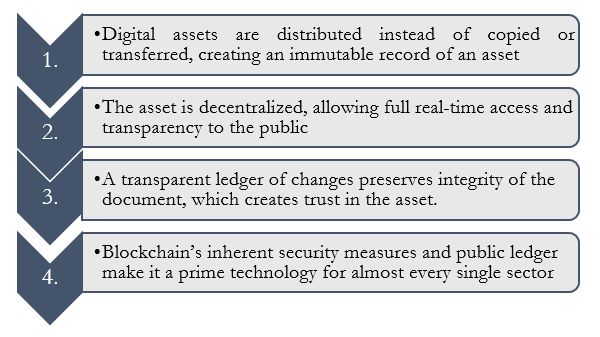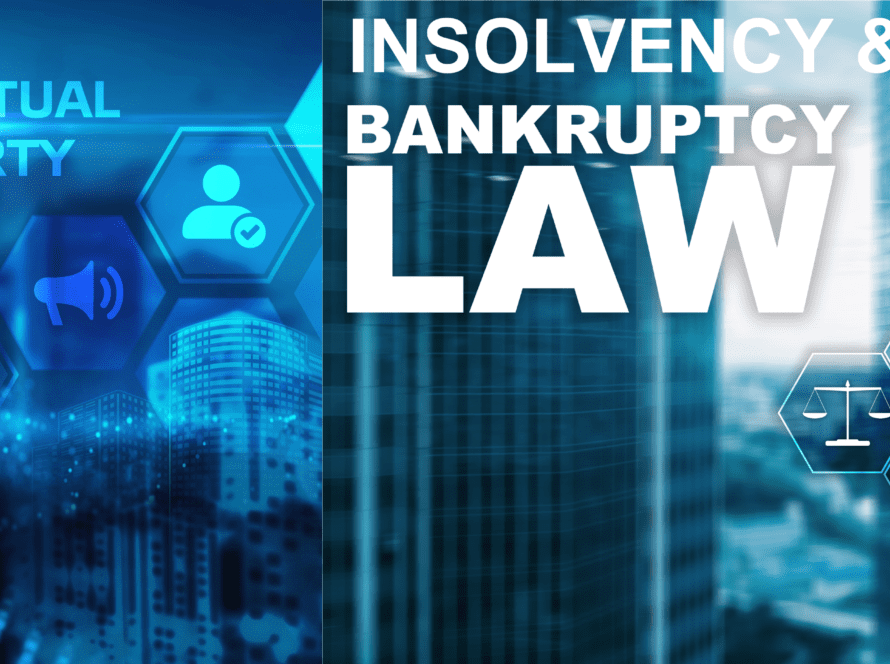Protection And Enforcement Of Intellectual Property In Metaverse
by Rahul Dhote (Mumbai) and Bhavya Aggarwal (Mumbai)
Introduction
Metaverse is undoubtedly the Buzzword of the Season. While citizens of the net place their best bets on whether it is the “Next Internet” or “Web 3.0”; it is fair to wonder what is the hype around metaverse really about. More so, if you happen to be someone who is looking at benefitting from this new technology facet. With the biggest tech companies investing and showing interest in Metaverse (e.g. Facebook renaming to Meta with USD 10 billion investment and Apple’s proposed launch of VR set), the reality of ‘virtual reality’ is not far away.
The pandemic has acted as a catalyst for metaverse to finally have its moment. Forced isolation and some fantastic technology advancements have paved the way for a new era of accessibility – a way where working, attending court hearings and meetings, and carrying out possibly anything from the comfort of our homes has now become a reality. What seemed like a far-fetched idea only a couple of years back has now come to birth as the ‘future of things’. However, the way we see it, metaverse is only at its gestation stage, with some ground-breaking advancements in its pipeline. While much of the technology developments mentioned in our analysis have already broken ground; in order to embrace metaverse to the best extent possible, it is fundamental to assess the legal complications surrounding it.
Understanding the Metaverse
The curious space termed as “metaverse” may be identified as a three-dimensional augmented reality which combines multiple virtual spaces into one decentralised universe. Envisaged to be the “new iteration” of the internet, the Metaverse aims to enable individuals to collaborate, socialise, meet, hold events, sell products and play games within this three-dimensional universe.
Working of a Metaverse revolves around ambient computing, i.e. a world where computers constitute as an integral part of all human interactions. A parallel universe of sorts, the Metaverse seeks to overlap and integrate our physical lives with their digital counterpart. Owing to such a nature and vast scope, it is understandable that multiple metaverses co-exist and several companies work on versions of them, each operating on its own set of network protocols. Thus, in simple terms: the Metaverse operates on an interplay of: (i) Virtual Presence; (ii) Augmented Reality and (iii) Blockchain Technology.
Examples
While there is no single linked metaverse yet, there are plenty of platforms and projects that operate in a manner akin to that of a Metaverse. For instance, there is Decentraland, which combines cryptocurrencies and Non-Fungible Tokens (“NFTs”) with virtual real estate. The digital world also allows players to involve and take active roles in the governance of the platform. Many such existing platforms include SecondLive, Axie Infinity, etc. among others. Basically, how we perceive most of the things physically, is being replicated virtually and will be influencing/changing business dynamics and business strategies to a great extent.
Metaverse v/s NFT v/s Blockchain
Non-Fungible Tokens or “NFTs,” formulate as unique physical and digital assets which can be traded in any metaverse. The additional allure of NFTs is the value derived and placed on its uniqueness, scarcity and popularity. It is no secret that each NFT is bought and sold at exorbitant prices even if it forms as a digital collectible asset. The most expensive NFT is currently priced at about sixty-nine million dollars. In the metaverse, which acts as a marketplace for the sale of such NFTs, users possess the ownership over their NFTs. For example, if land was purchased on Decentraland, the proof of ownership would manifest in form of an NFT, guaranteed by Blockchain.
The concern that such digital assets can be reproduced by print or a digital download are not unfounded. However, the true appeal of an NFT is the exclusive ownership of the asset.
As mentioned earlier, Metaverse essential operates vide the use of Blockchain Technology and further regulated by use of Cryptocurrencies.

Protection and Enforcement of Intellectual Property in Metaverse
Brand-owners are increasingly being encouraged to secure their IP in the virtual medium. With the virtual reality becoming a business reality, physical businesses are now inclined to commercialize their brand value in Metaverse and the first step towards it is to apply, secure and protect the said IP for virtual exploitation. We are looking at a world where companies and individuals are earning profits by selling their goods without the need of having a manufacturing facility and bearing the cost of production and raw materials. E.g. Nike branded shoes are being sold as NFTs and/or virtual goods for the online avatar to use it while playing games and/or otherwise.
For instance, American Express, has applied before the USPTO to secure its IP and the application serves to cover, “Assistance with electronic transfers of money in the metaverse and other virtual worlds; Banking services in the metaverse and other virtual worlds; Issuing and processing payments of virtual prepaid cards, virtual prepaid gift cards, virtual stored value cards, and virtual payment cards in the metaverse and other virtual worlds; Virtual currency exchange; Electronic transfer of virtual currencies etc.“
Various proactive brands such as Nike, Converse, etc., have filed number of applications to secure trademark and patent rights before the US Patents and Trademark Office (USPTO) to protect the use of their marks in the virtual space. The applications specify “Downloadable Virtual Goods” directed towards the creation and trade of NFTs. In order to cover the usage and trade in Metaverse, the blanket phrase “for use in online and online virtual world” and “virtual environment” is being commonly seen as part of such applications.
Recently, the entertainment company, Disney’s patent for virtual-world simulator was approved by the US Patent Office. The technology purports to project three-dimensional images and the visual effects onto the physical world. Utilising this technology, visitors of Disney Park would soon be able to enjoy the pleasure of the Augmented Reality sans headset. The device instead focuses on the personalization of projections and experiences of the augmented reality.
Protection of Trade Marks as Virtual Assets in India:
As there is no specific mention of the words ‘Metaverse’ and/or ‘NFTs’ in the nice classification, currently, brands seeking protection in the online and virtual world are utilising relevant descriptions available under law to be able to protect sale of their goods and/or services in Metaverse. While such applications are being examined globally, outcome of the same would be applied in various other jurisdictions including India. Such protection availed under existing law would be further explored and strengthened in times to come. A few relevant classification/description which can be used and/or availed under the Indian Trade Mark law is as under:
| Sl. No. | Classification | Particulars |
| 1. | Class 9 | Downloadable virtual goods, namely, computer programs featuring footwear, clothing, headwear, eyewear, bags, sports bags, backpacks, sports equipment, art, toys, movie stills, shape, label, device, accessories, merchandise, etc. for use online and in online virtual worlds. |
| 2. | Class 35 | Retail store services featuring virtual goods, namely, footwear, clothing, headwear, eyewear, bags, sports bags, backpacks, sports equipment, art, toys, movie stills, shape, label, device, accessories, etc; on-line retail store services featuring virtual merchandise, etc. |
| 3. | Class 41 | Entertainment services, namely, providing on-line, non-downloadable virtual footwear, clothing, headwear, eyewear, bags, sports bags, backpacks, sports equipment, art, toys and accessories for use in virtual environments. |
Note: These descriptions are also used before USPTO and marks have been registered
(Note: The above table is not exhaustive but is mentioned only as a reference point to be able to understand the form of classification/description which can be used for such virtual goods and services.)
Infringement of IP rights and Enforcement
While the Metaverse is still developing, the challenges posed to Intellectual property in the physical world are also presented in the virtual counterpart. The increased accessibility of Metaverse has allowed various sectors like luxury fashion, music, media and entertainment, healthcare, retail, hospitality, etc. to extend their customer base and to appeal to a larger audience. This has also resulted in fear/threat of infringement and commission of various other crimes against the proprietor of any Intellectual Property in virtual medium.
The fundamentals of protection and enforcement remain the same, however the disputes in Metaverse will certainly test boundaries of IP laws around the world with its diverse application in various forms. Brands like Gucci, Prada and Hermès have already taken action before International forums for infringement of their relevant IPs due to unauthorised usage in Metaverse. A few disputes in this space contested before such international forums are listed below.
In Hermès v. Mason Rothschild, Hermès sued Mason Rothschild (an NFT creator) for trademark infringement, wherein, Rothschild created a virtual series of purses, coined “MetaBirkins,” in a series of NFT images that depicted the Hermès’ BIRKIN bag design covered in various furs. Hermès Birkin bags sell for thousands of dollars. The MetaBirkin NFTs also sold for large amounts, reportedly bringing in more than USD 1 million. While the Court rejected interim relief to Hermès as the NFTs were used as an expression to protest against animal cruelty, the first principles of trade mark law including strength of the BIRKIN mark, evidence of actual confusion, and evidence of Rothschild’s bad faith in adopting “MetaBirkin” were argued and considered.
In Nike, Inc. v. StockX LLC, Nike alleged that StockX – the operator of an online resale platform for various brands of sneakers, apparel, luxury handbags, electronics, and other collectible goods – is “minting” digital assets or non-fungible tokens (NFTs) that prominently use Nike’s trademarks. Nike further alleges that StockX is “marketing those NFTs using Nike’s goodwill and selling those NFTs at heavily inflated prices to unsuspecting consumers who believe or are likely to believe that those “investible digital assets” (as StockX calls them) are, in fact, authorized by Nike when they are not.” Nike filed legal action for trademark infringement, trademark dilution, and several other related claims. While the dispute is presently pending before the US Court, it would be interesting to see the outcome of the same.
In Miramax, LLC v. Quentin Tarantino and Visiona Romantica, Inc., Miramax sued Tarantino (and Visiona) for breach of contract, copyright infringement, trademark infringement, and unfair competition. Miramax contended that Tarantino granted and assigned to Miramax, all rights pertaining to the film PULP FICTION, and that the development, marketing, and sale of the NFT collection infringed on Miramax’s copyright and trademark rights. Tarantino contended that he was within his rights to develop, market, and sell the NFTs, as he reserved all print publishing rights for the screenplay (including in electronic form).
While the dispute was later settled, this certainly demonstrates creation of separate rights over digital assets/virtual assets/NFTs and the need to incorporate the same in contracts. This can also be used as a tool to commercialise to one’s advantage, wherein, digital assets/virtual assets/NFTs are either reserved or sold separately based on the business requirements.
In TAMARINDART, LLC v. Raisa Husain and Owais Husain as Administrators of the Estate of Maqbool Fida Husain, the administrators of the estate of the Indian artist, MF Husain, challenged the right of TamarindArt LLC, the buyer of Husain’s painting called ‘Lightning’, to proceed with a project involving the sale of NFTs based on the artwork.
In 2002, Tamarind acquired the painting, “Lightning”, created by M.F. Hussain for $400,000, and the transaction allegedly included an “exclusive, worldwide copyright-free license to display, market, reproduce, and resell” the work. Recently, Tamarind launched a campaign to sell NFTs based on the artwork. The project will be a “‘drop’ of an undetermined number of NFTs with 62 unique features. Each NFT will represent one of the 12 panels of the artwork with its own feature.” Husain’s estate sent a letter of cessation and withdrawal in January, after Tamarind began turning art into NFT. While the case is presently pending, it raises questions about the rights to mint NFTs based on artwork.
Concluding remarks:
It is certain that in times to come, Metaverse, directly or indirectly, will affect each and every industry in more than one ways. While infringers will find innovative ways to exploit the loopholes and gain illicit benefits by exploiting someone else’s IP, it would be interesting to see how Indian Courts apply IP principles to provide appropriate reliefs to the IP owners in this space. It will also be interesting to see metaverse platform’s liability to any IP infringement, if any.
A few infringement issues in Metaverse which may come up before Indian Courts in times to come would include music/film/video clips/artistic work being used and played in a virtual space without permission; somebody’s avatar being unauthorizedly used in Metaverse; brand NFTs being illegally sold on a gaming platform; illegal e-commerce sale on metaverse; a mark of a prominent hospitality chain being used for operating a virtual hotel or a restaurant in metaverse; IP assets including marks, design, etc. owned by any fashion label being exploited in Metaverse illegally; etc. A few of these issues, as discussed above, are already being adjudicated by International Courts, which can be used as a reference.
Though the space of Metaverse is as exciting as is, corporates and individuals alike must adopt a 360-degree protection to prevent any altercations. In this regard, firstly, registration of Trademarks and other relevant IP in relevant classes is a must for any start-up, company or a brand aiming to build a strong presence in Metaverse, or even otherwise. Secondly, infringement of IP in Metaverse is as serious as infringement in Physical world and should be addressed with appropriate civil and/or criminal action to prevent dilution and/or erosion of mark and to prevent loss to one’s business. Finally, the number of trademark classes must be expanded so as to provide the highest possible protection to avail presumption of validity and ownership of the said IP in Metaverse.
The content of this article is intended to provide a general guide to the subject matter. Specialist advice should be sought about your specific circumstances.




